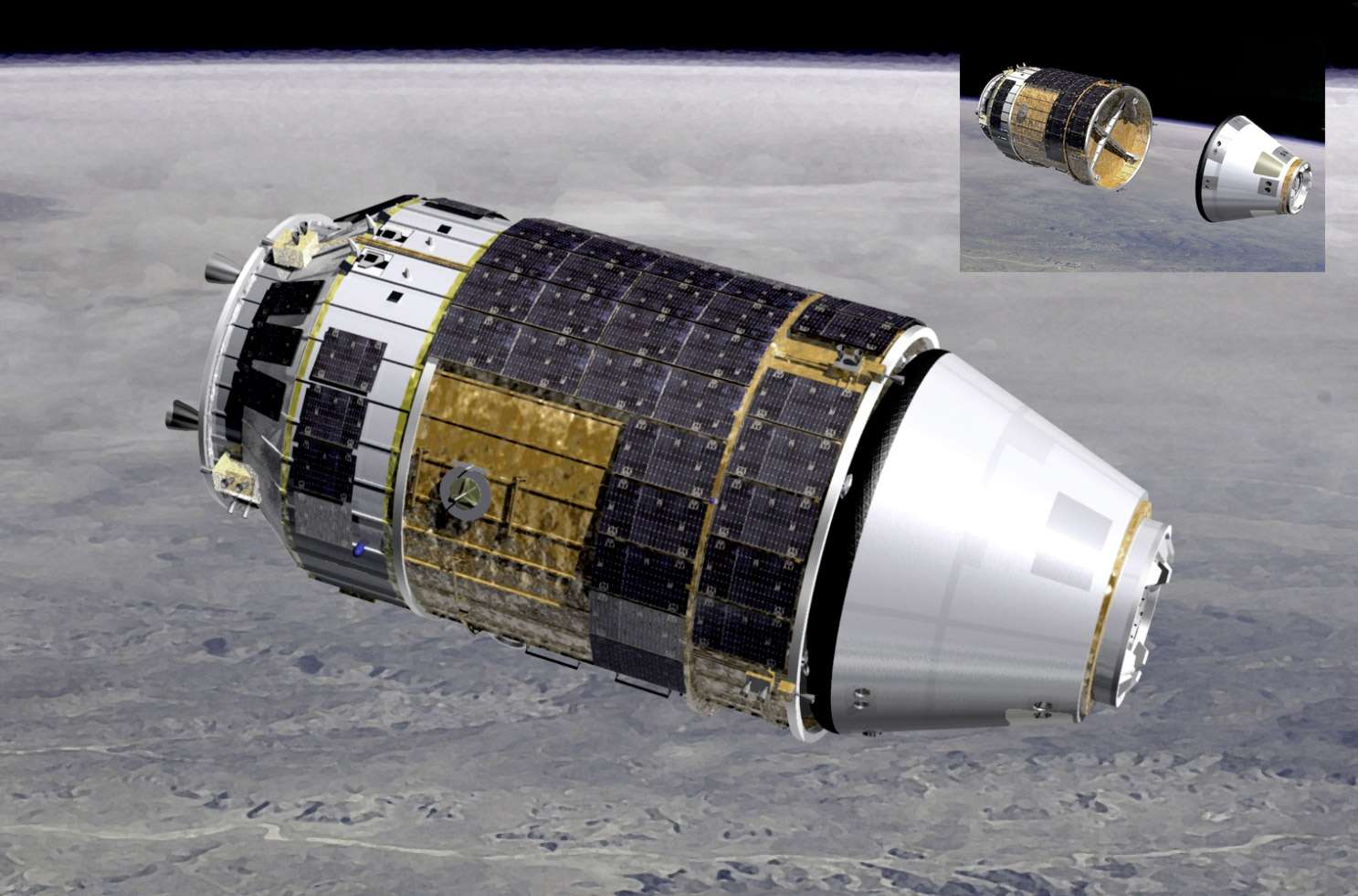Did you know that Japan also sends spacecraft to the International Space Station? Yes, the H-II Transfer Vehicle, or HTV, is a Japanese cargo spacecraft, and the seventh in the family was launched on September 22, 2018 (at 19:52 CEST)! In addition to being the largest current spacecraft to dock with the ISS, it is also the one that can carry the most equipment. HTV-7, the one launched in recent days, notably carried new batteries, a new glovebox, three small satellites, and a bunch of other materials.
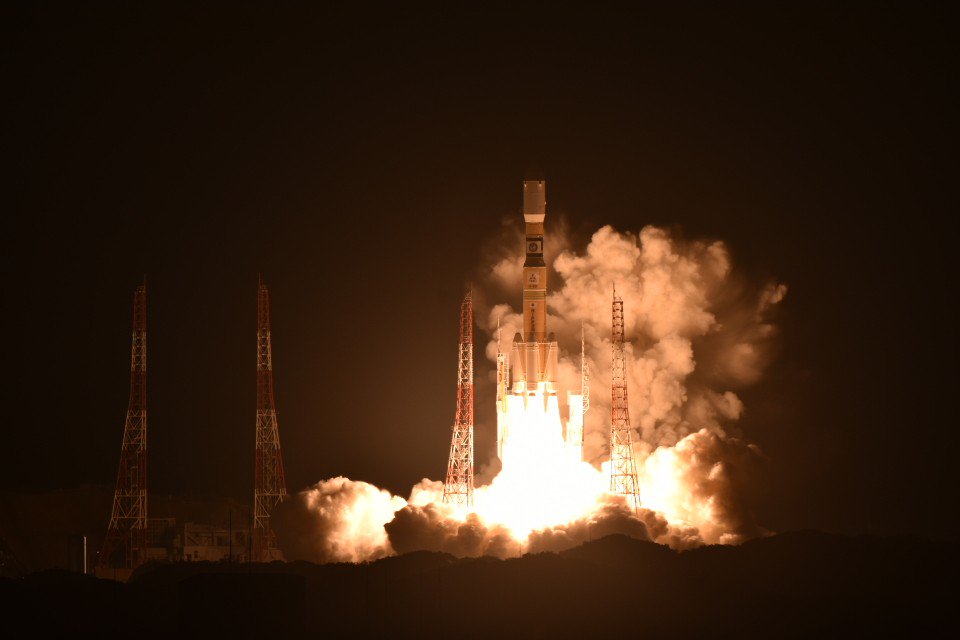
The HTV cargo
The HTVs are cargo spacecraft used for resupplying the ISS. A total of seven of these spacecraft have been launched since 2009, with nearly one HTV launching every year. These capsules measure just under 10 meters in height, including the four main thrusters, with a diameter of 4.4 meters. In comparison, the Japanese laboratory Kibo aboard the station is 11.2 meters long with the same diameter. When empty, the cargo weighs 10.5 tonnes and can carry an impressive payload of 6.1 tonnes. However, this payload is divided into two distinct sets: pressurized and non-pressurized payloads. The pressurized payload can weigh up to 5.2 tonnes and is stored in the PLC (Pressurized Logistics Carrier), the upper part of the cargo. On the other hand, each HTV can carry 1.9 tonnes (for the new versions of the cargo since HTV-6) of non-pressurized payload, stored in the ULC (Unpressurized Logistics Carrier), the central part of the spacecraft.
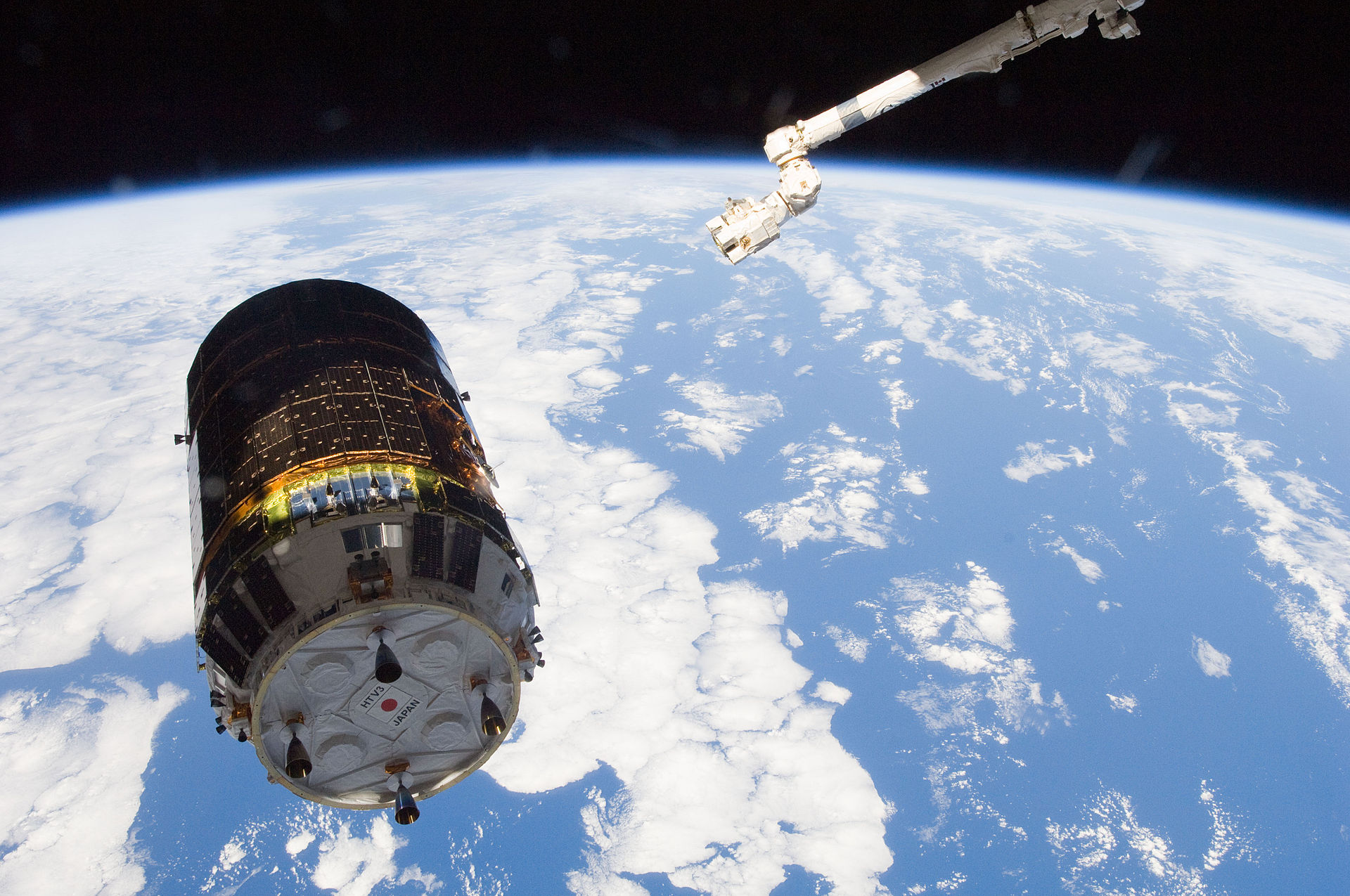
The launch of these cargoes is ensured by the Japanese H-IIB rocket. This launcher only participates in HTV launches. However, the H-IIB is essentially a more powerful version of the H-IIA: it has a larger and wider first stage (37.2 x 4m for the H-IIA compared to 38.2 x 5m for the H-IIB) with two engines, a longer second stage (11m compared to 9.2m), consistently four solid rocket boosters while the H-IIA exists in two versions (with 2 or 4 boosters), and a larger payload fairing (5.2m in diameter and 7m high, similar to the heavy version of the H-IIA: the 204 version with 4 boosters). This launcher takes off from the Tanegashima Launch Center located at the southern tip of the Japanese archipelago, at latitude 30° N. Out of its seven launches, none have failed.
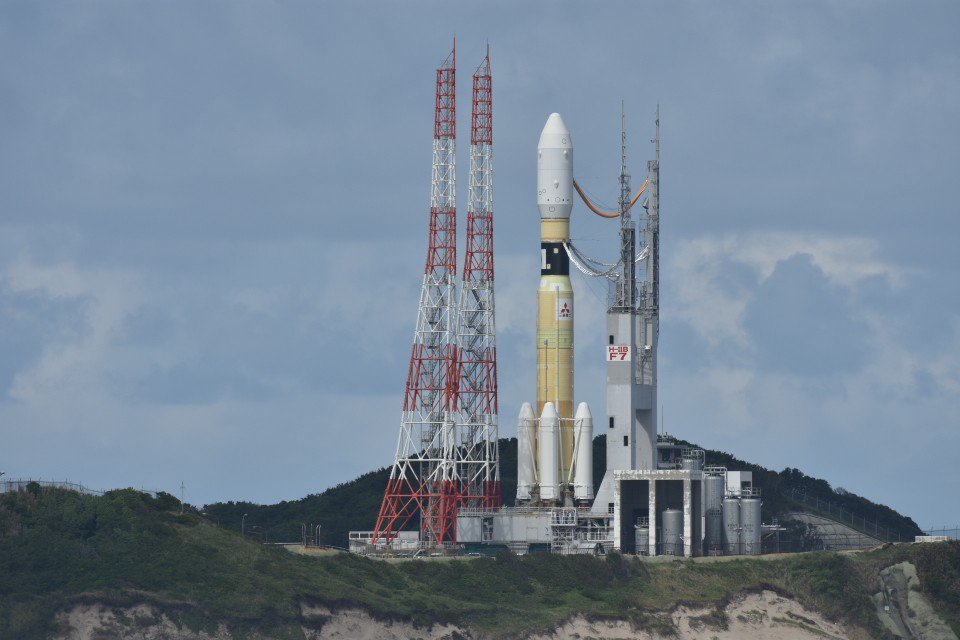
Once in orbit, the HTVs begin a cruise phase lasting a few days to reach the station. For HTV-7, this phase lasts about three and a half days. As it approaches the ISS, the cargo stabilizes before being captured by the station’s Canadarm 2 robotic arm. Indeed, this Japanese cargo cannot dock itself to the ISS like the Russian Progress and must be moved by this arm, similar to SpaceX’s Dragon or Northrop Grumman Innovation System’s Cygnus. After being attached to one of the ISS ports, astronauts can open the hatch to access the pressurized section, the PLC. In this compartment, everything is neatly organized, and to save space, cargo bags are found on the floor, walls, and even the ceiling. Yes, in space, everything floats, so it’s not a problem to store items everywhere. During its stay on the station, the cargo will be unloaded both inside and outside. The Canadarm 2 will retrieve the equipment installed in the ULC (unpressurized cargo hold) and store them elsewhere outside the station for potential extravehicular activities by the astronauts to permanently install them. Finally, after spending about thirty days up there, the HTV is filled with waste (in the PLC as well as in the ULC). It will then depart from the station and burn up in the atmosphere over the South Pacific (or elsewhere in the case of HTV 7).
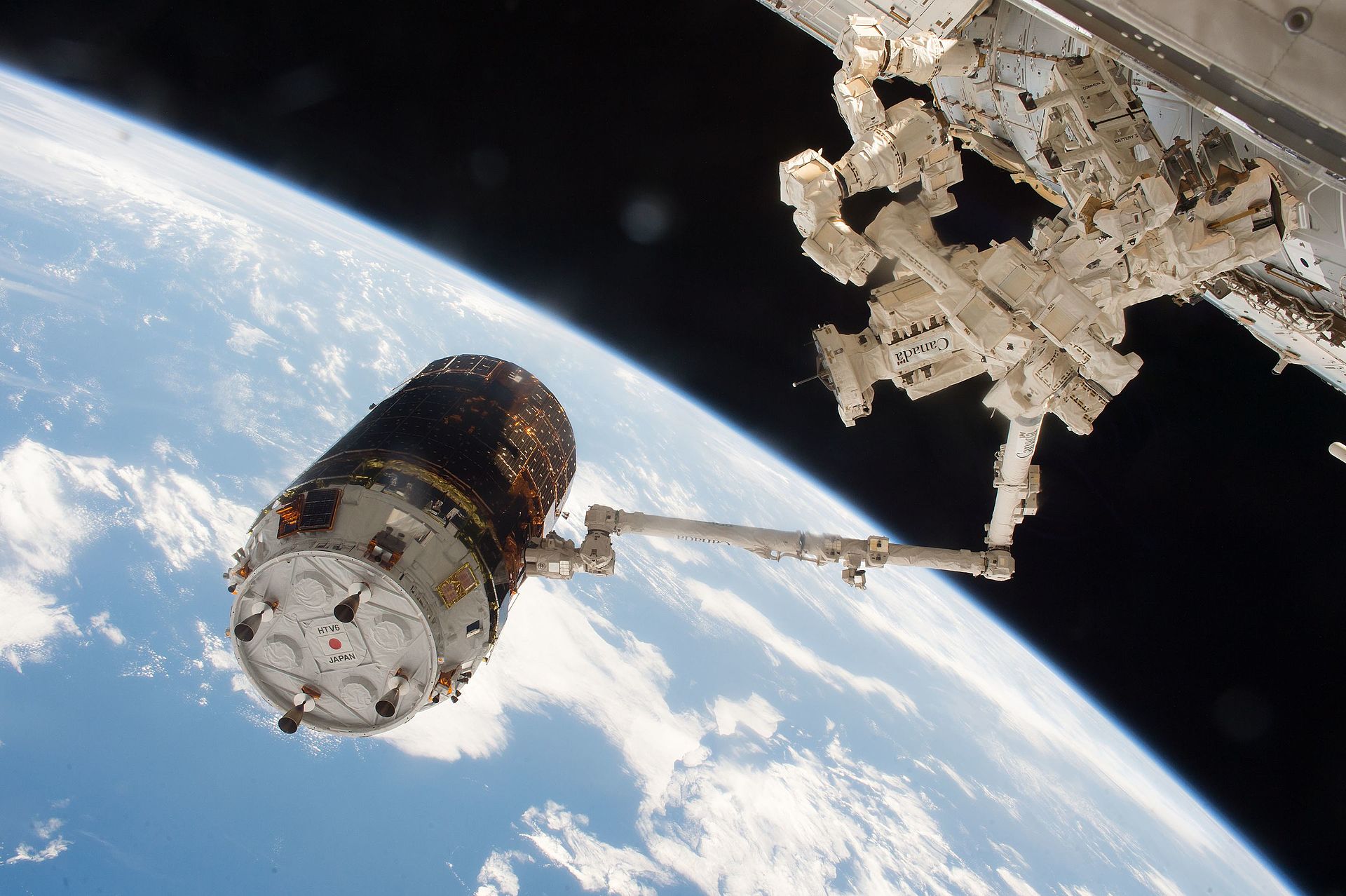
To maneuver in orbit, HTVs have various types of thrusters. There are already four engines with an individual thrust of about 500N, with their nozzles protruding from the rear of the cargo. These are used for orbital rendezvous maneuvers as well as the deorbit maneuver. For finer attitude control, HTVs are equipped with 28 small thrusters with a thrust of about 110N each. All of these thrusters operate by burning a mixture of MMH (monomethylhydrazine) and nitrogen oxide oxidizers (NO, N2O4, NO2), which are stored in four tanks totaling 2.4 tons of propellant.
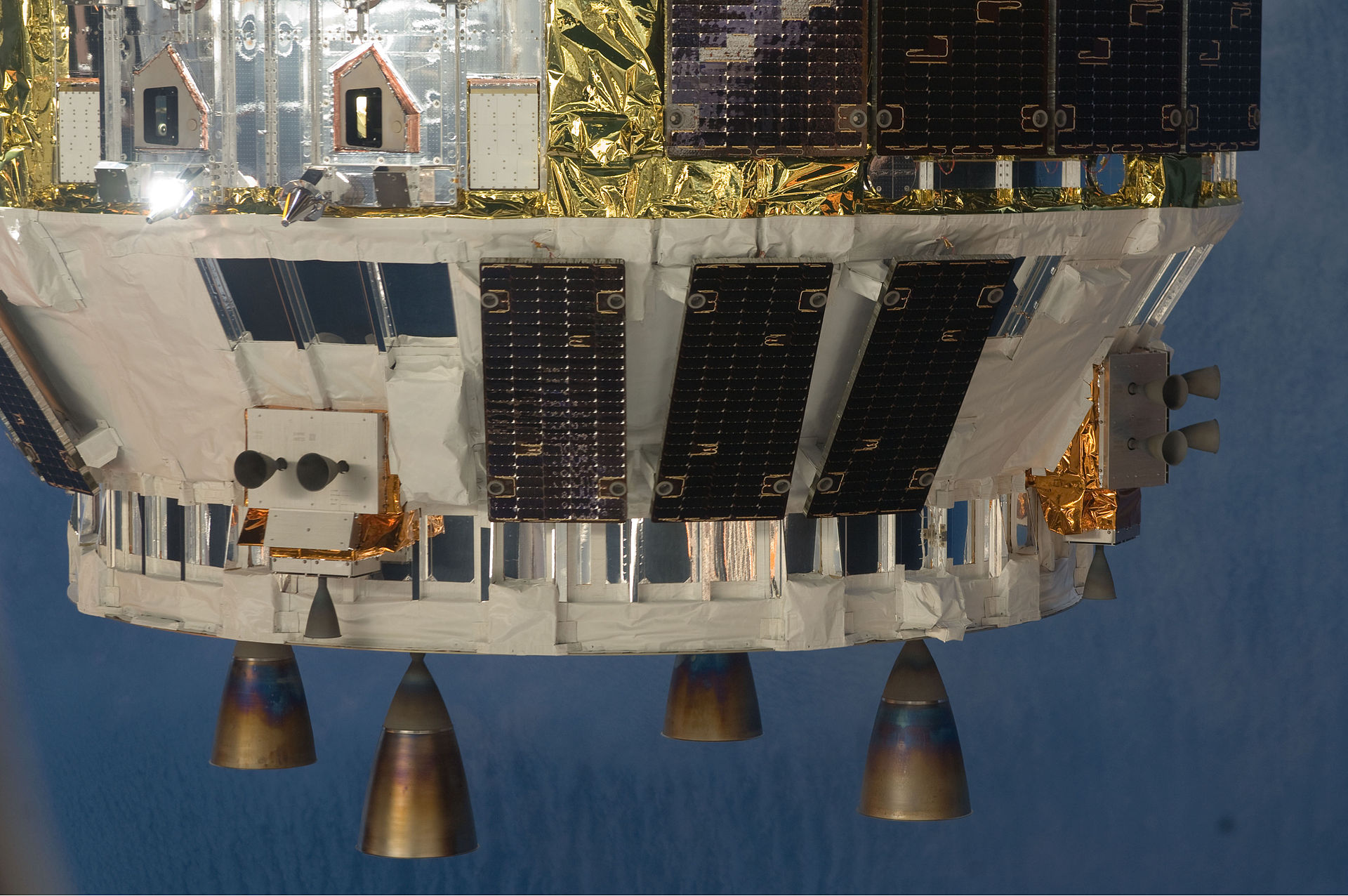
HTV 7
This seventh HTV cargo will carry a total of 6.2 tonnes of cargo, distributed as follows: 4.3 tonnes pressurized and 1.9 tonnes outside. The PLC is filled with:
EXPRESS Racks 9 and 10: The EXpedite the PRocessing of Experiments for Space Station racks are systems designed for the storage and rapid and simple execution of multiple scientific experiments. They are equipped with standardized interfaces and provide electricity, data, cooling, water, etc., to the various experiments. Each of these racks, developed by NASA, can accommodate up to ten small modules. Racks 9 and 10, carried by HTV-7, are the last two planned.
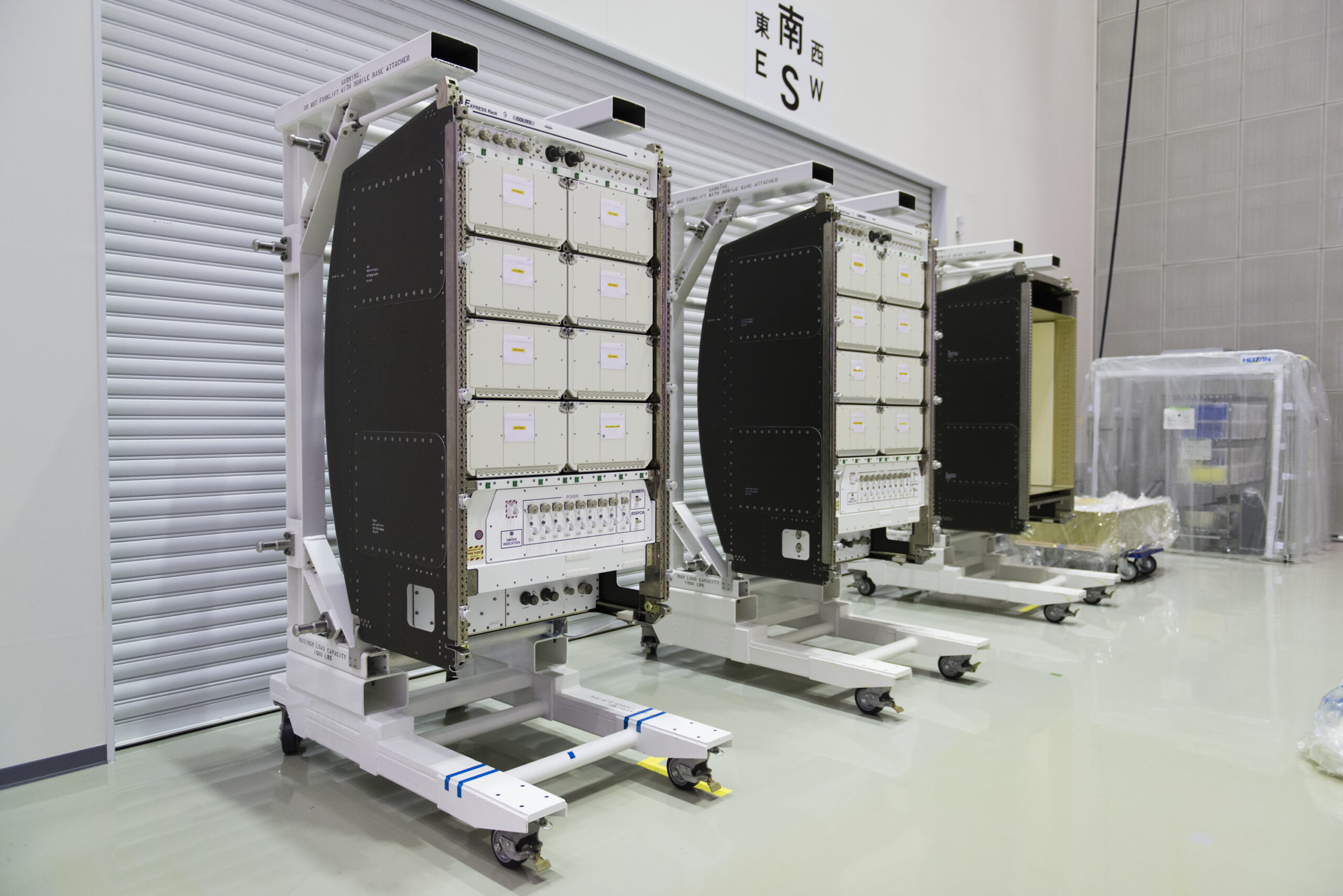
LSG: The Life Sciences Glovebox is a sealed glovebox that allows for scientific and technological experiments to be conducted in a controlled environment. Due to its large size, two astronauts can work inside simultaneously. This experimental facility was manufactured by NASA and will be installed aboard the Japanese Kibo laboratory.
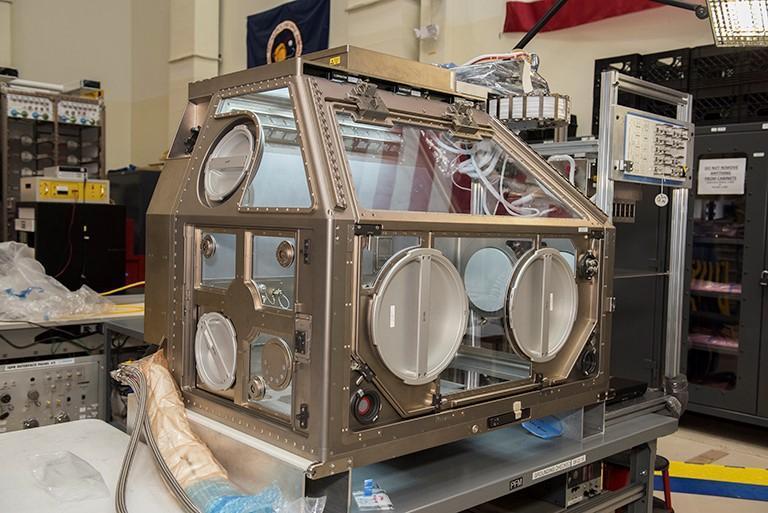
LSR : Le Life Support Rack est un équipement fabriqué par l’ESA et Airbus. Il est aussi connu sous le nom ACLS pour Advanced Closed Loop System. Ce système a pour but de tester un nouveau type de support de vie. Ce type d’équipement doit retirer le dioxyde de carbone de l’air, générer de l’oxygène et recycler le CO2 tout en utilisant le moins de ressource possible. L’ACLS est prévu pour un équipage de trois astronautes et sera installé à bord du laboratoire américain Destiny. Grâce à ce système en boucle fermée, il serait possible d’économiser jusqu’à 450kg d’eau par an.
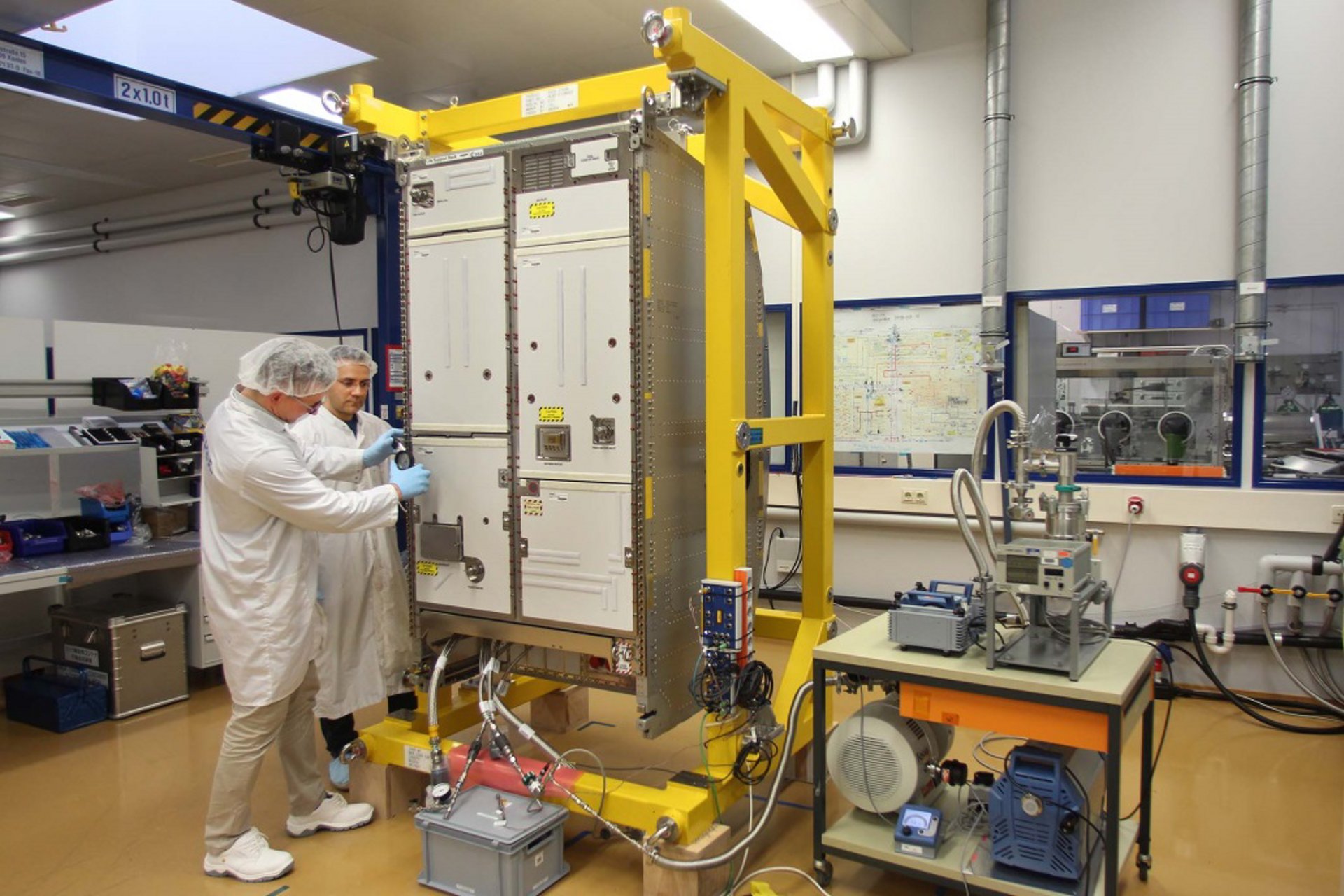
LHPR: The Loop Heat Pipe Radiator experiment aims to demonstrate the technological capability of a brand-new thermal regulation system. This demonstrator will be installed outside the Kibo laboratory, on the Japanese robotic arm. LHPR will allow the use of a new type of system, which is more efficient and less hazardous, for regulating the temperature of satellites.
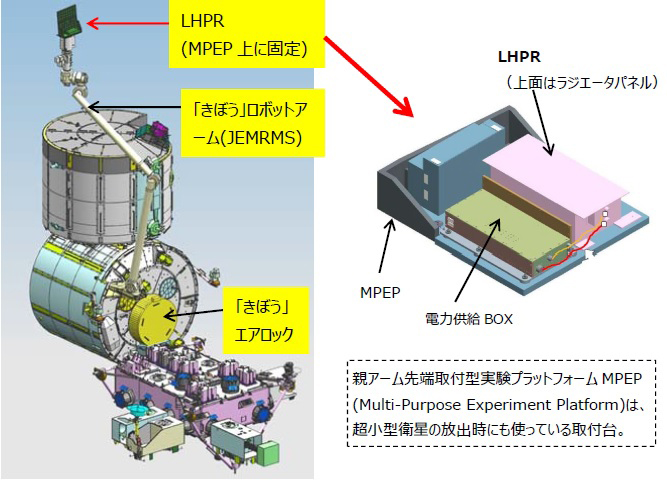
3 CubeSats: SPATIUM-1 (technology demonstrator for measuring electron density, 3D mapping of the ionosphere, and miniature atomic clocks), RSP-00 (technology demonstrator for imaging with onboard camera and high-speed transmission), STARS-Me (technology demonstrator for a space elevator with a 10m long cable). These three microsatellites will then be deployed from the airlock of the Kibo laboratory, marking the 10th CubeSat deployment in this manner.
HSRC: A sample return capsule for scientific samples (details in the following paragraph).
Food supplies as seen on HTV 5 and 6, including fresh fruits and vegetables.
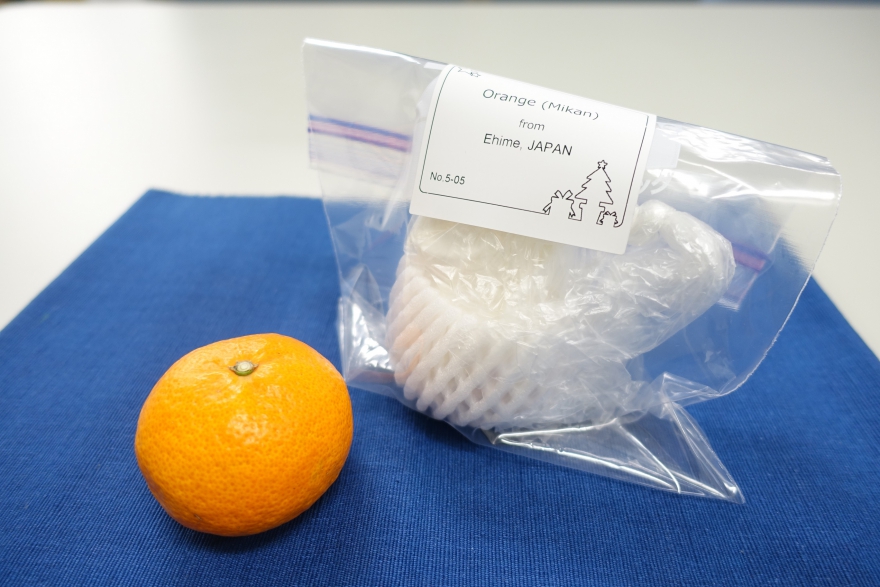
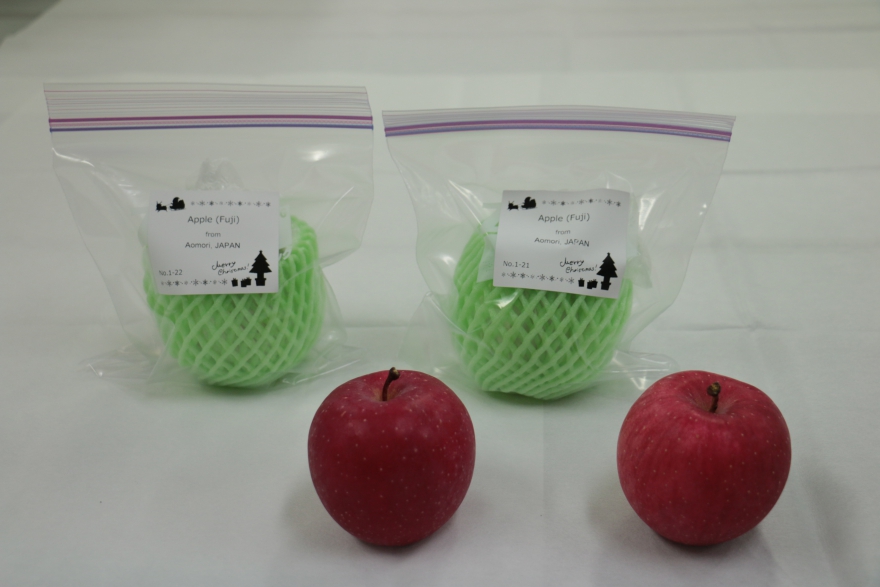
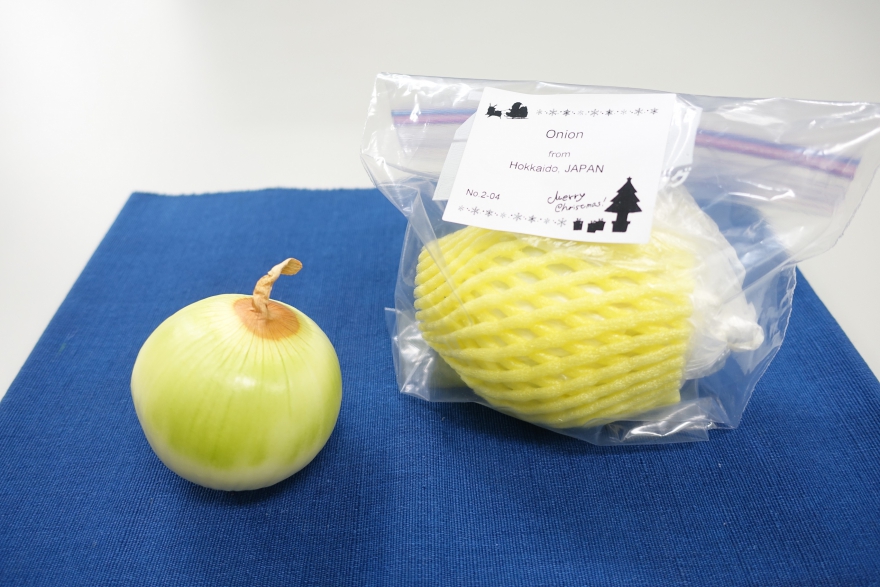
The ULC, meanwhile, carries six batteries that will replace those of the station. Indeed, the ISS’s first electric batteries were Nickel-Hydrogen-based. They had a very long lifespan but couldn’t store much energy. That’s why, since 2017, they’ve been replaced by Lithium-Ion batteries. The latter can store twice as much electricity for the same volume, meaning only half the number of batteries originally needed. The batteries carried by HTV 7 will be removed by the Canadarm 2 and placed at the P4 truss (near the first solar panels on the left side of the station). This maneuver is visible in this video produced by the Canadian Space Agency. Two EVAs (extravehicular activities) will then take place with Alexander Gerst and Andrew Feustel for the first and with Alexander Gerst and Ricky Arnold for the second to install them in place of the old ones.
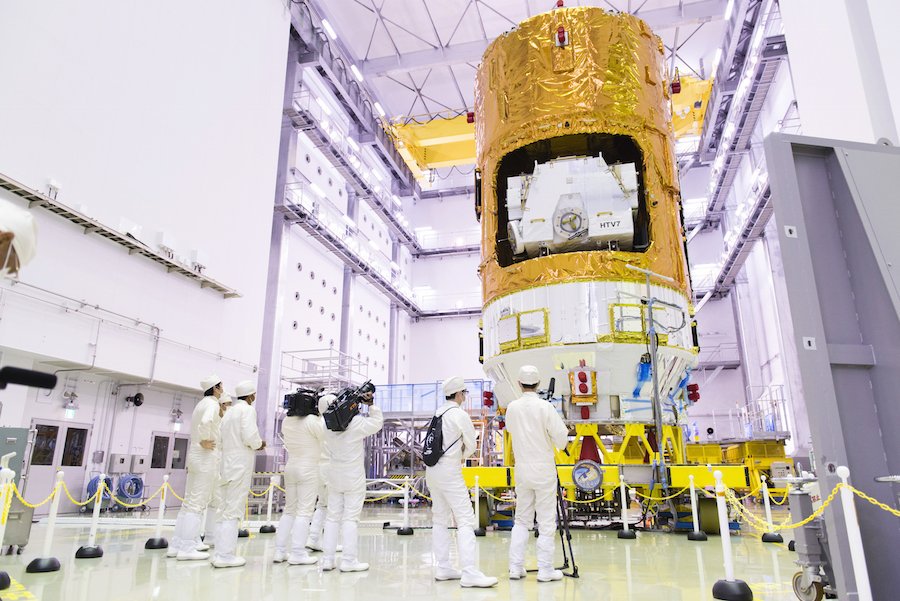
HSRC
This acronym stands for HTV Small Reentry Capsule and symbolizes a technological demonstrator of a small capsule carried aboard HTV-7 (and likely future HTVs) that would allow for the return to Earth of scientific experiments conducted aboard the ISS. This capsule, which measures 84cm in diameter and 66cm in height, is initially stored like any other cargo in the PLC.
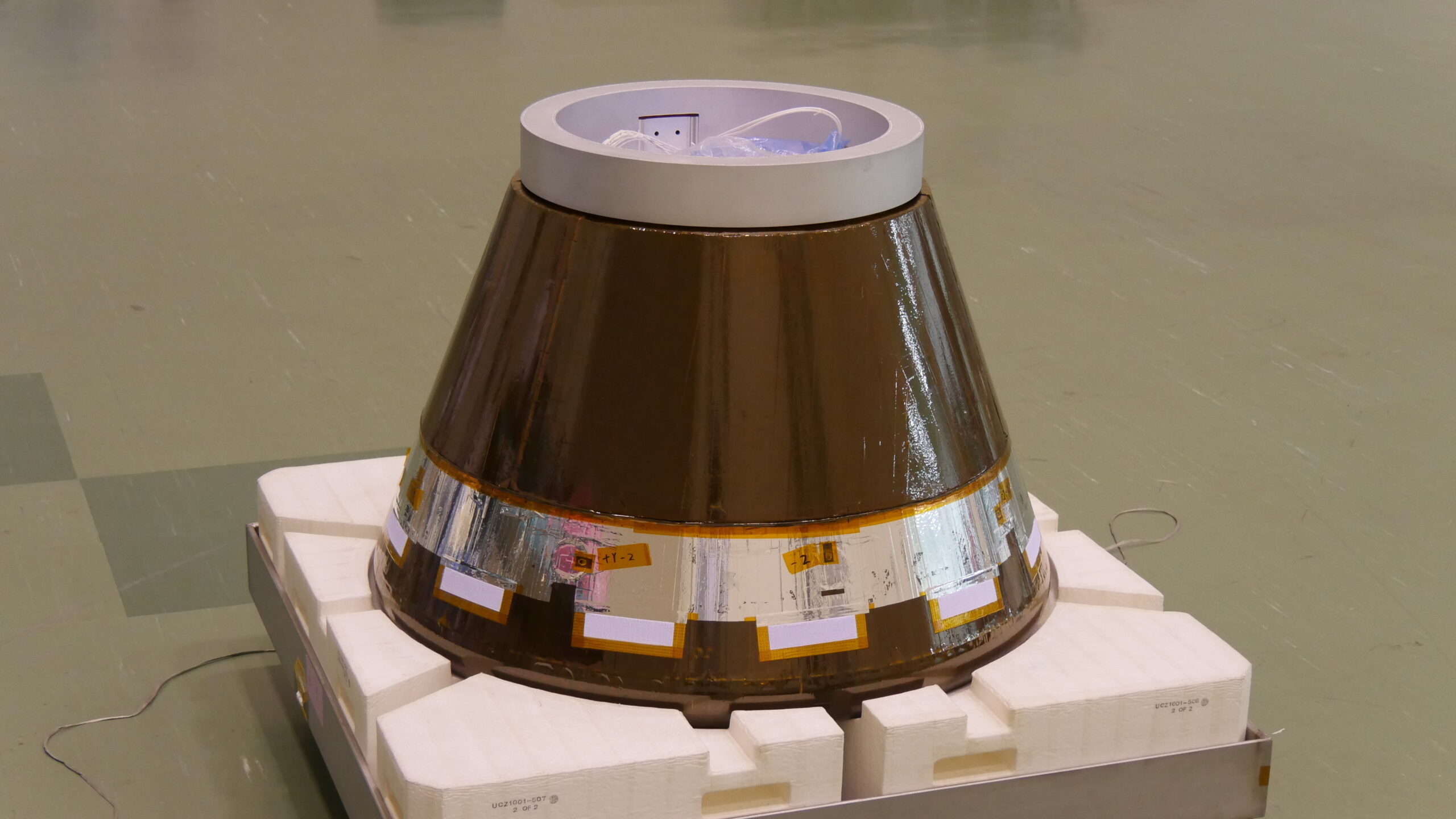
It’s only once in orbit that it will be moved. Indeed, before the cargo departs, the door of the HTV will be removed, and a specially designed fixture will be installed in its place. This fixture ensures the seal of the PLC but, most importantly, it secures the HSRC capsule so that it can be released once in the atmospheric re-entry trajectory.
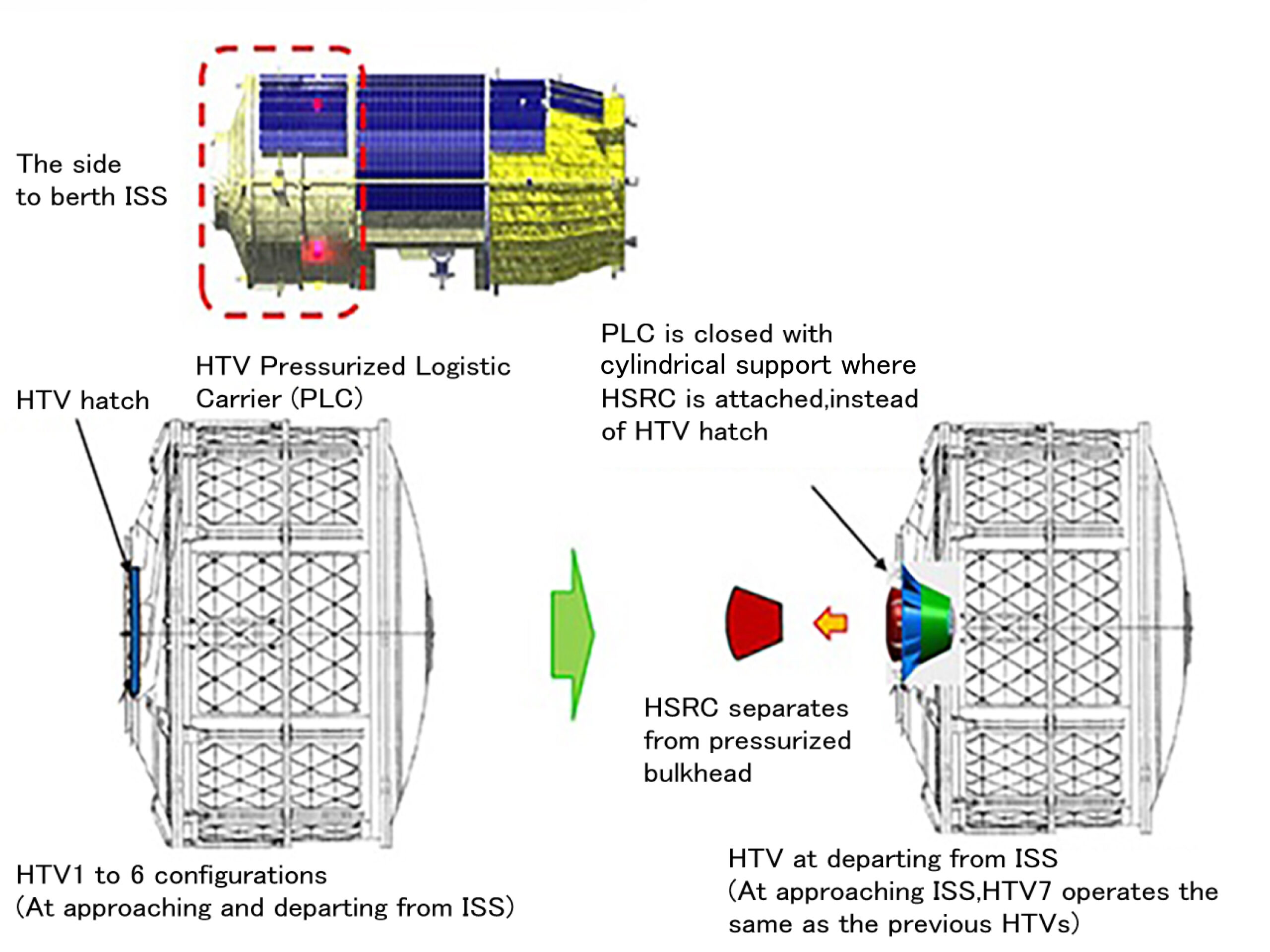
The capsule has an external section containing parachutes, fuel tanks, and small 3D-printed engines that will allow the HSRC to orient itself during reentry. This section is also protected from the heat of atmospheric reentry by a thick layer of ablative panels. Inside, there is a double-walled container (similar to a thermos) that can store up to 20kg of experiments while remaining passively cold (or 5kg if it is necessary to maintain even lower temperatures). The HSRC capsule carried by HTV-7 will be filled with protein crystals grown in the station for further analysis on the ground.
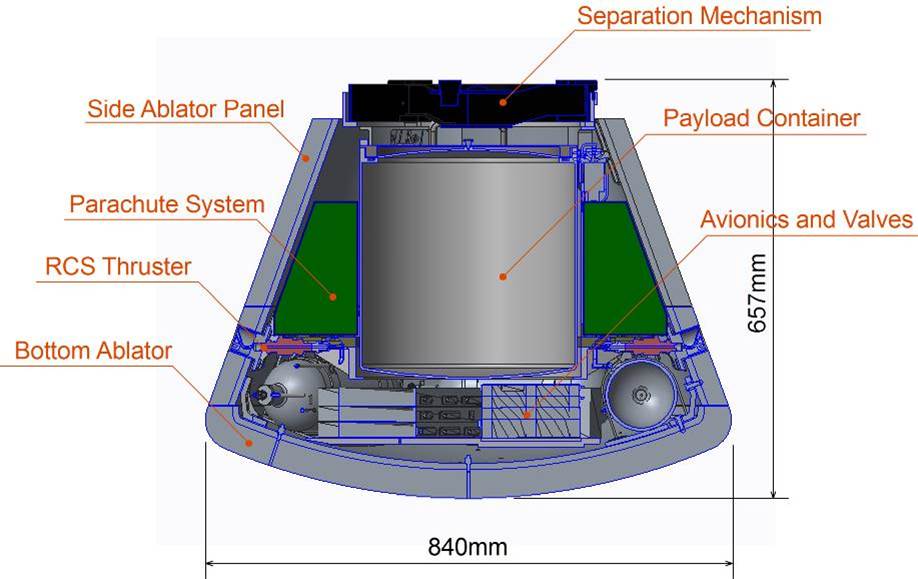
Once the HTV-7 cargo has undocked from the ISS, it will fire its four thrusters to deorbit. Only after this maneuver will the HSRC be separated from the rest of the cargo. Unlike other HTVs, this one will perform its atmospheric reentry over the Northwest Pacific Ocean so that the container inside the capsule can be quickly recovered and transferred by boat and then by plane to the laboratories. The remaining part of the capsule will be brought back more slowly by boat to then study its reentry resilience and verify that everything went as planned.
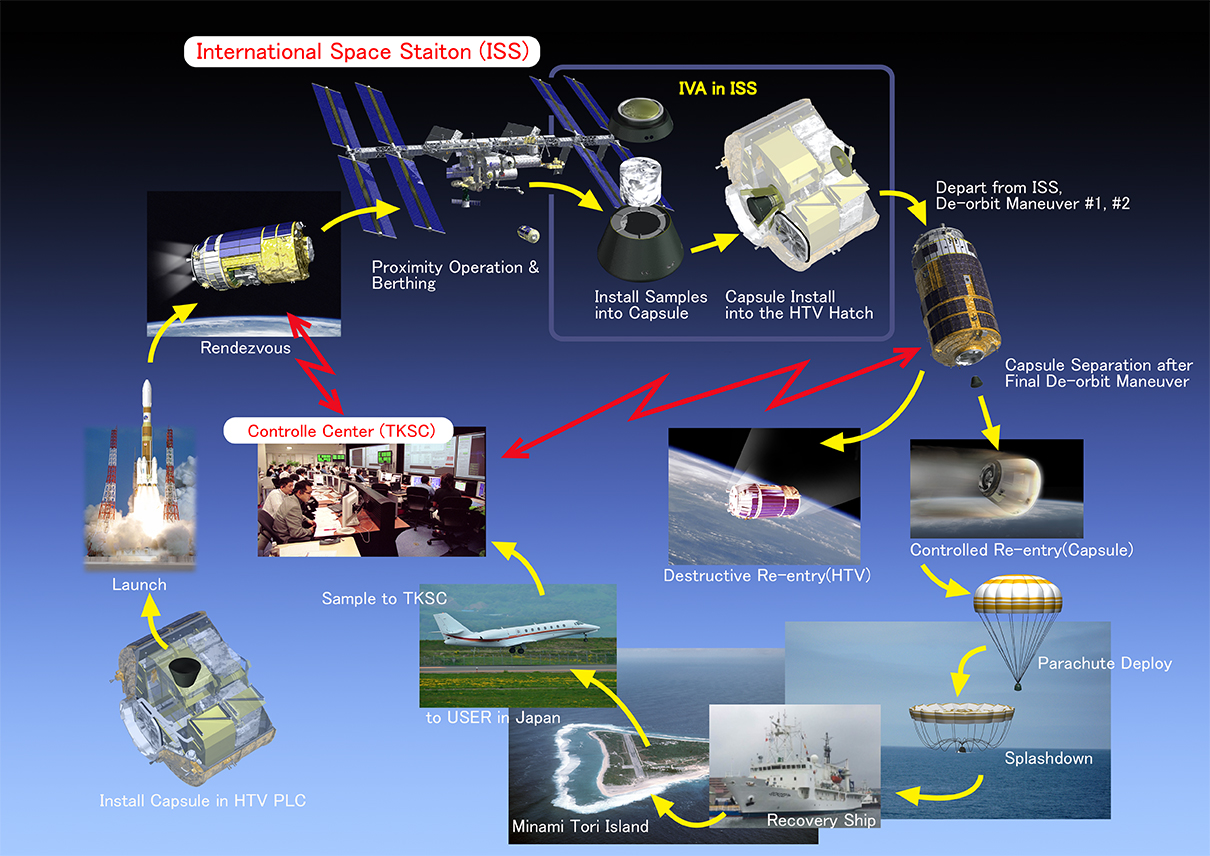
This HSRC capsule is derived from the HTV-R capsule, which was supposed to be a variant of the HTV cargo but with a reentry capsule instead of the PLC. This would have allowed large quantities of experiments to be returned to Earth. However, the HTV-R remains under evaluation, and conceptual plans published by JAXA (the Japan Aerospace Exploration Agency) in 2012 also included another derivative of the HTV that could carry three astronauts to orbit with 400kg of cargo. This is a development to keep an eye on!
